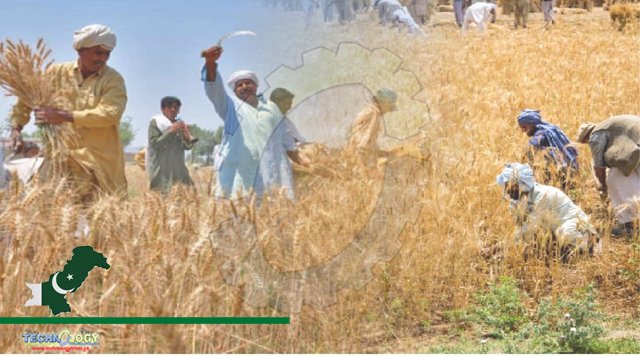Pakistan can save hundreds of millions of rupees by minimizing post-harvest crop losses through the use of modern equipment.

Horticultural produce loss is a pressing issue in the post-harvest process. It can be caused by a variety of things, from growing conditions to retail handling. Agricultural production is seasonal and subject to environmental factors, but post-production processes are crucial in ensuring the stability of the food supply chain. Talking to WealthPK, Prof Dr. Muhammad Azam Khan, Chairman Department of Horticulture, PMAS-Arid Agriculture University Rawalpindi,said that about 35 to 40% of total production is lost as a result of post-harvest losses in fruits and vegetables due to improper handling of the perishable products, inefficient transportation, and inadequate storage facilities and market infrastructure. Post-Harvest Crop Losses “If we see wheat post-harvest losses, it starts from seeds,” he said. “As wheat seeds arrive in March and April, we need to do proper grading and make that seed dry, and use suitable packing material, but before packing there should be proper fumigation so that it doesn’t catch fungus, and there should be a proper storage facility where we can store them for a longer period of time because they will be used in November.
If we don’t, the viable seed won’t germinate properly, which lowers the percentage of wheat production,” he explained. Dr. Azam said proper seed collection and storage are the key to ensuring viable seeds in the future. “Farmers and companies that are engaged in the production of wheat should follow protocols, including knowing how to handle seed grain after harvest and prepare it for the following year,” he added. Dr. Azam mentioned that potato also has post-harvest losses. “We must harvest potatoes using machinery to prevent post-harvest crop losses because manual harvesting causes potatoes to get cut, and cut potatoes become infested with fungus. Therefore, a field-to-fork facility — where one can harvest or use potatoes should be available to reduce this damage,” he said. Dr. Azam mentioned that similar post-harvest crop losses occur with other crops such as banana, tomato, melon, mango, and orange. There is a dire need to tighten the supply chain if farmers are to reduce their losses. “Training programs for farmers must be arranged at basic levels where they should be taught about techniques and management of these fruit crops,”
He said farmers must receive training in supply chain management, which includes instructions on how to harvest fruit, the use of gloves, and hand hygiene. He said the farmers need to be aware of the best times to harvest. “Treatment follows farmers’ training; some crops need to be treated with cold water, while others need to be treated with hot water,” he said. “After harvesting, the farmer must be aware of the best place to store the fruits, such as in boxes with holes or a certain type of box. Then for transportation, Post-Harvest Crop Losses, a suitable chilled transportation system, such as reefer trucks, should be in place to transport these fruits to the market because farmers are losing money when specialized vehicles are not available for particular items,” he said. Then comes the stage of packaging materials, which need to be of good quality and reasonably priced, as well as viable that needs to have adequate air or proper good insolation material used so that farmers could store their fruits for a longer duration of time. “The primary harm caused by the absence of these facilities is loss of weight and nutritional value of a product,”
Source: This news is originally published by nation